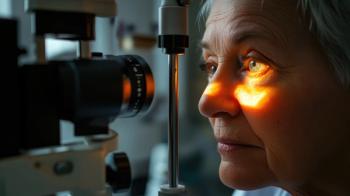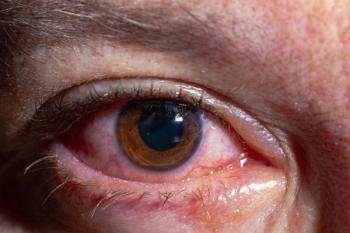
Preserving the History of Retina, One Narrative at a Time
The American Society of Retina Specialists’ History of Retina is an initiative that highlights the milestones and the pioneers in ophthalmology and retinal disease treatment.
Tucked among the booths of pharmaceutical, technology and other companies serving the practice of ophthalmology at the American Society of Retina Specialists (ASRS) meeting last week was a display on the
The initiative first began in 2020 as an effort to capture interviews with pioneers in ophthalmology by Kirk H. Packo, M.D., a past president of ASRS and a former chairperson of the Department of Ophthalmology at Rush University Medical Center in Chicago, who passed away on Sept. 1, 2023. Packo’s interview for the History of Retina can be found
“One of Kirk’s real passions was history, and particularly the history of ophthalmology and the history of the retina and the retina specialty,” Timothy G. Murray, M.D., past president of ASRS and director of ASRS History of Retina, said in an interview. “He gave a lecture that was probably the best lecture on the history of the retina that any of us had ever heard. What he realized was that people were forgetting the history of their specialty, that they really didn’t know how it started and who the people were.”
From that lecture, the idea for the History of Retina project was born. Murray said Packo and former director of the History of Retina initiative John S. Pollack, M.D., were interested in first-person narratives with people in retina about what motivated them to pursue ophthalmology, their accomplishments and the changes in the field. That led to the development of History of Retina website, which went live in 2021 with the first interviews with industry leaders.
Now, four years later, in addition
One of the first advances in the field of ophthalmology came from Samuel Thomas Soemmerring, who in 1791 discovered the macula in the retina; the development of the ophthalmoscope and an early imaging device in 1851 and 1852. The timeline also features a look at more recent developments, including new treatments for geographic atrophy in 2023 and the approval of the first gene therapy for a retinal disease in 2017.
In between, ASRS highlights the contributions of pioneers, physicians and scientists, such as Arnall Patz, M.D., who made a discovery that saved the sight of premature babies; Harold Novotny, M.D., and David Alvis, M.D., who published about the first method for using the diagnostic fluorescein angiography; and David Kasner and others who developed tools for vitrectomies.
Among the artifacts in the virtual museum is a magnet that was used to extract metal from the eye, an early handheld fundus camera (which photographs the rear of the eye), early 20th-century ophthalmoscopes, vintage vitrectomy instruments and a 1968 book called Symposium: Treatment of Diabetic Retinopathy.
The History of Retina exhibit was first displayed at the 2023 annual meeting in Seattle and then again at this year’s meeting in Long Beach, California, which was held July 30, 2025, to Aug. 2, 2025. Murray said the plan for the future is to continue to grow the oral histories and tributes for the website, and to continue exhibiting at annual meetings when held in the United States.
Going forward, Murray says the program will continue to provide updates on leaders in retina with a plan to do six oral histories each year.
Murray highlighted in the interview that the next generation of retinal leaders — including Christina Y. Weng, M.D., with Baylor College of Medicine, and Justis P. Ehlers, M.D., with the Cole Eye Institute of the Cleveland Clinic — have joined him in preserving and growing the oral histories, and Pradeepa Yoganathan, M.D., with the Kresge Eye Institute, is working on written vignettes.
“This is a multi-generation effort to capture and write about the people in our field before they are lost,” Murray said.
Newsletter
Get the latest industry news, event updates, and more from Managed healthcare Executive.

















































